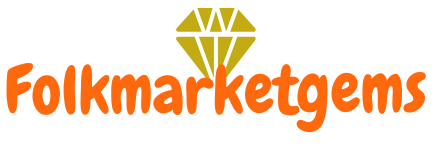Folkmarketgems Blog - Learn Natural Gemstones, Minerals, Crystals Info, News, Tips, Researches
Luster is the property of minerals to reflect the light from the outer surface of the gemstones. These reflections of light are internal and make it look transparent in the case of facet stones. The light inside gemstones cannot be called luster. The properties of gemstones equated with luster are often defined as an outer image of the surface of a gemstone that makes it look brighter externally. Luster makes the mineral appear shiny or not shiny depending amount of light reflected from the gemstones. Gemstones and minerals can have a metallic appearance and sometimes they can be labeled as non-metallic luster. Scientifically, luster is defined as a shine in stones that is emitted when light is reflected from the surface of stones which is observable under the illumination.
How Luster is observed?
Luster is usually observed under direct illumination of light. The light passes through the specimen and it reflects light to display the luster of minerals or gemstones. The examination of stones is to move the specimen through different wavelengths of light to observe at various angles to check the luster.
What are Types of Lusters in Stones?
There are different types of terms are used to define luster in minerals and gemstones. It includes the following terminologies that include Adamant, Vitreous, Silky, Greasy, etc.
There are two main types of Luster
Metallic (such as pyrite , hematite)
Non Metallic (all gemstones)
Nonmetallic Luster
Many of the mineral specimens don't have any kind of metallic or sub-metallic luster. These minerals and their specimens are called "nonmetallic" luster. Many types of minerals have nonmetallic luster.
The nonmetallic luster in gemstones and minerals can be characterized into the following types.
Adamantine
Sub Adamantine
Vitreous
Sub Vitreous
Greasy
Silky
Pearly
Resinous
Waxy
Dull
Non-Metallic Luster
Appearance
Adamantine
Sparkly
Earthy
Dull, clay-like
Pearly
Pearl-like
Resinous
Like resins, such as tree sap
Silky
Soft-looking with long fibers
Vitreous
Glassy
Adamantine
Adamantine is the ability of gemstones to shine or sparkle. For example, Diamond. Adamantine luster in minerals or gemstones has a high refractive index, which is between 1.9 and 2.6. Examples of adamantine luster are cerussite and anglesite.
Sub-Adamantine
Sub-admantine has a luster that is relatively lighter the full adamantine-like diamonds. They have a close affinity to the adamantine and fall into category that is similar to the adamantine for example, Cubic Zircon.
Vitreous
Some gemstones have a glass-like outer surface which includes tourmaline, Quartz, and topaz. Most gems have a vitreous or in other words, the glass-like surface is also called luster. It includes beryl, quartz, topaz, ruby, emerald, and other gemstones that have a refractive capacity that is between the range of 1.50 and 1.70 on its measurement scale.
Sub-Vitreous
Subvitreous is the ability of the gemstones that have a low reflection of light on the surface of gemstones. One the examples of sub- vitreous gemstones is fluorite.
Greasy
Some gems have a greasy surface that makes them look like oil-like or layer of a fat on its surface. Examples of greasy gemstones are serpentine, garnet, or peridot. The luster is not evenly distributed on the polished surface of gemstones but appears randomly or makes gemstones look flat in some areas on the surface.
Silky
The gemstones that have a silky luster are due to the fibrous material, for instance, gypsum and Malachite. The silky luster is also found in Ulexite or moonstone. The hemstone having silky luster often looks like fabric in its appearance and texture. The polished tiger's eye has a glassy luster that has a fibrous body.
Pearly
Some gemstones have a pearly outer surface that is similar to the pearl that is whitish in appearance. Some of the gemstones display iridescent play of colors on their surfaces that make them look different from other types of luster.
Resinous
Amber was found and preserved in prehistoric plants. The gemstone that falls into the category of resinous luster forms thick waxy substances on the surface of the gemstones for example, Sphalerite has a resinous luster. These gemstones are soft and have low refractive capacity like Amber and Opal.
Waxy
Some gemstones look like that has thick wax on the surface. The best example is turquoise and Opals. Jade is another mineral with a waxy luster. Waxy minerals are slightly transparent to translucent. The waxy minerals have small mineral extracts that disperse the light making it more waxy in its appearance. Most of these minerals will improve their appearance and bring out their color better with good polish.
Dull
Some of the gemstones have a dull luster as it is very low light. The dullness of luster has a fine surface like a grain. The dull luster is described as an "earthy" luster. The dull luster is non-reflective. The dull luster is a rough and porous surface that diverges the light instead of reflecting on minerals. Kaolinite, limonite, and hematite have a dull or earthy luster.
Metallic
The gemstones and minerals have metallic traces in them. Pyrite and Hematite are two examples that have ores of metal. Metallic gemstones are not used due to traces of metals in them.
The metallic minerals have the same color as the metals such as gold, silver, or copper. The metallic gemstone specimens are more reflective and don't lose their metallic luster. They appear to be opaque and have the same color as a metal.


























